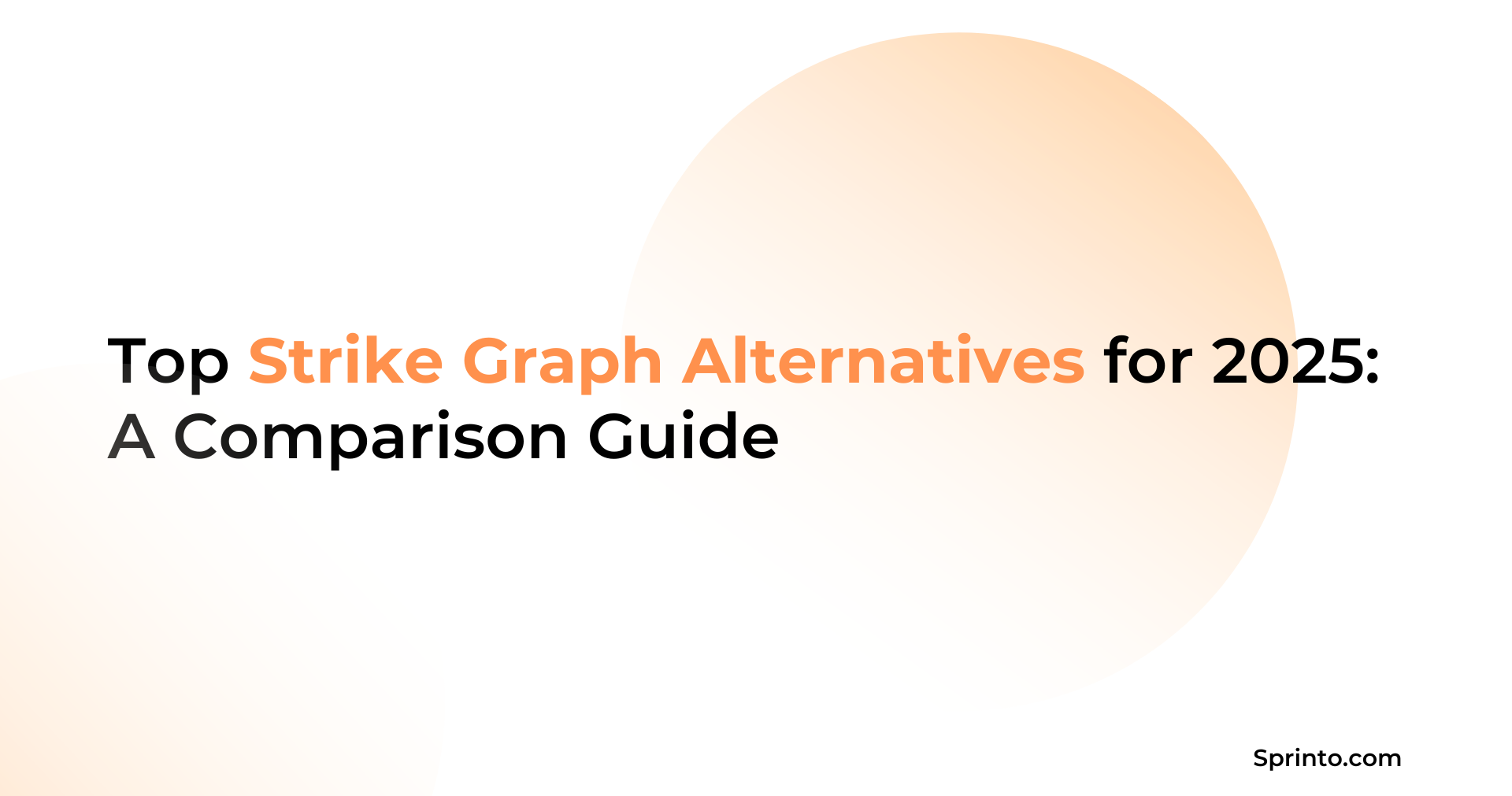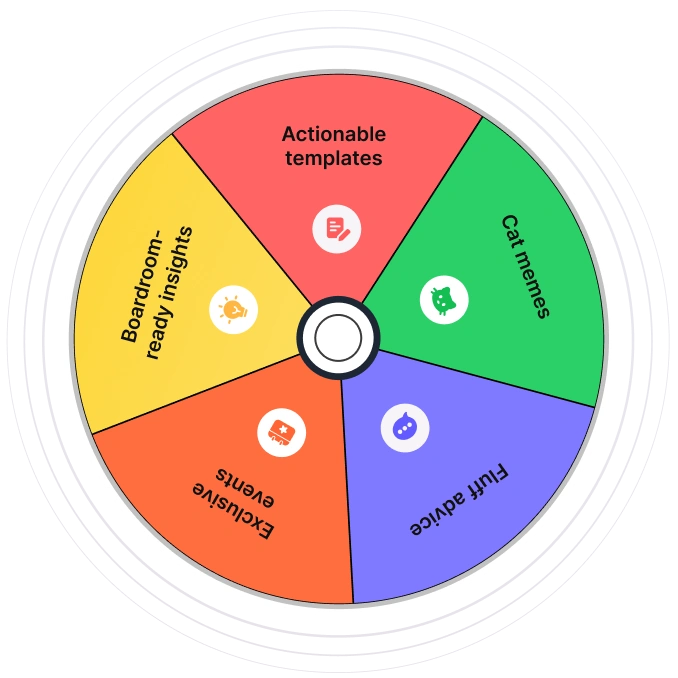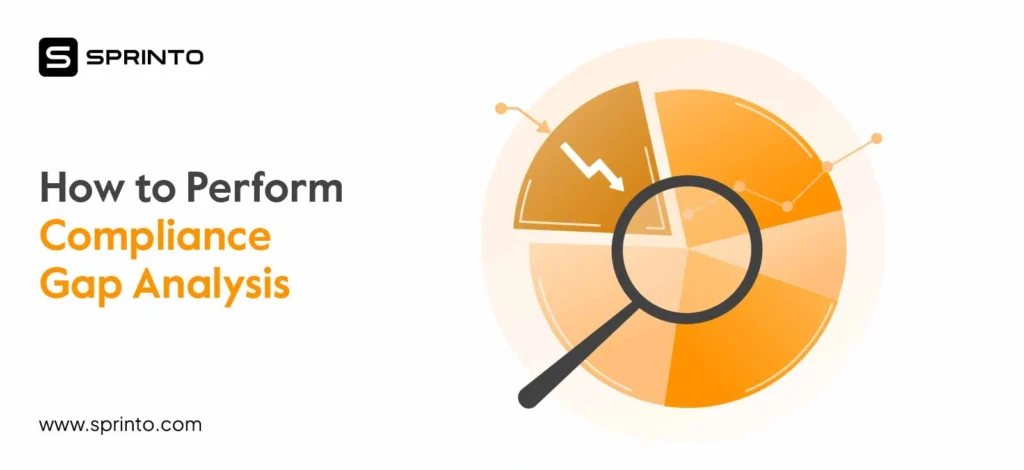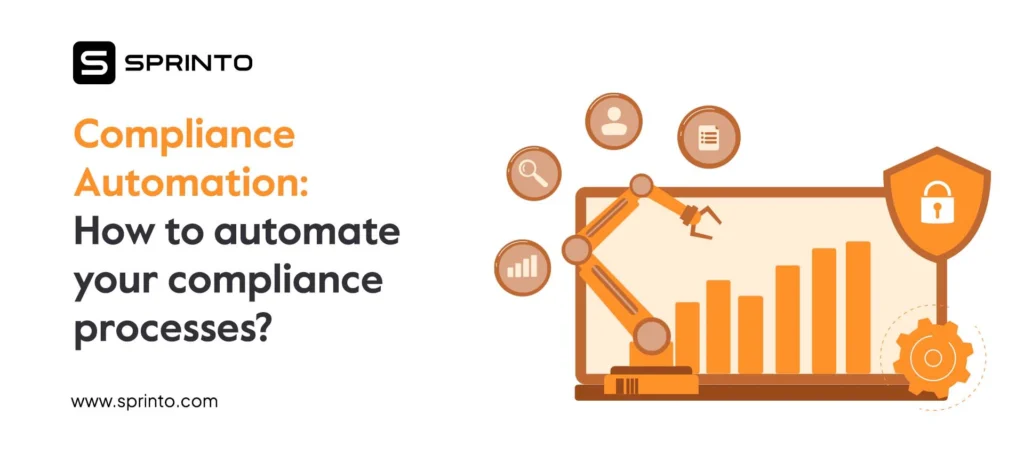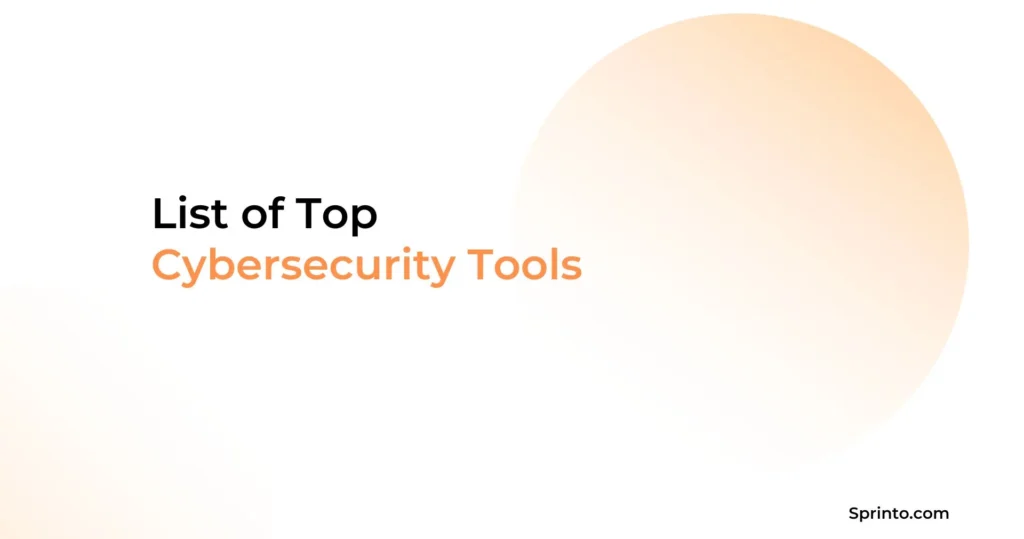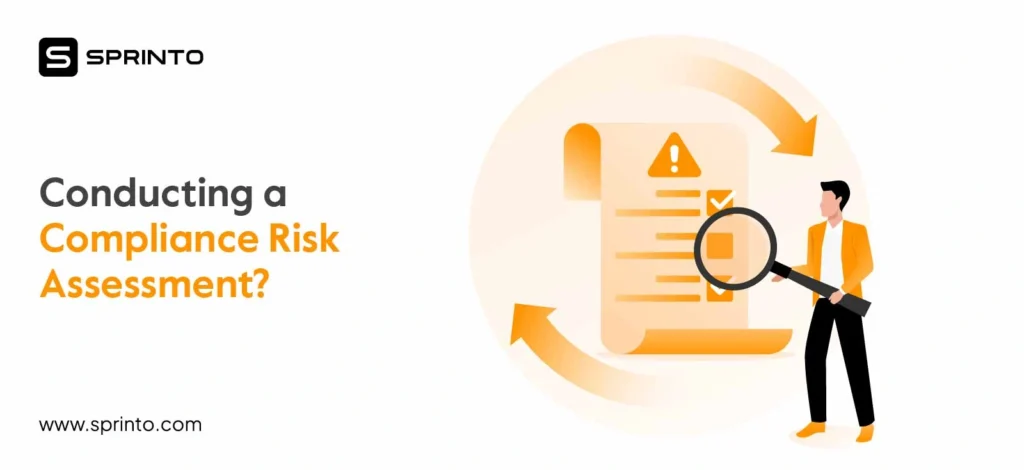Ask any GRC Lead what their biggest pain point is, and you’ll get a laundry list of concerns. From managing and collecting evidence to completing necessary compliance regulations and building a solid security infrastructure, building a solid security posture can take a lot of effort.
Strike Graph is one of the platforms in the compliance space that’s helping teams manage this complexity. But depending on your team size, complexity, and regulatory needs, you might wonder, ‘Is it really enough?’
If future-proofing your compliance program is your goal, it makes sense to keep your options open and explore what other platforms can bring to the table. In this blog, we’ll break down the top alternatives to Strike Graph so that you can find the right fit for your compliance needs.
Our top picks
| Sprinto | Secureframe | Drata |
| Tools considered: 15+ | Tools reviewed: 10 | Best tools chosen: 6 |
Strike Graph is a solid entry point for first audits, but many teams outgrow its limited automation and integrations.
We reviewed 15+ tools, studied 10 platforms, and shortlisted 6 best alternatives for 2025: Sprinto, Secureframe, Drata, Vanta, AuditBoard, and Thoropass.
Each offers different strengths, from deep automation to audit-focused depth.
Together, these platforms cover the full spectrum, ensuring that no matter your compliance maturity, there’s an option for your unique needs.
What is Strike Graph?
Strike Graph is an AI-powered compliance platform that helps organizations build and manage security programs, collect audit evidence, and achieve certifications. It supports frameworks such as SOC 2, HIPAA, ISO 27001, NIST, CMMC and more. The platform is designed to simplify the path to certification by combining guided workflows, automation, and a centralized interface that reduces the manual effort typically involved in compliance.
What does Strike Graph do?
Strike Graph provides companies with a structured way to manage compliance tasks without getting stuck in repetitive manual processes. Teams can design security programs, align them with frameworks like SOC 2, HIPAA, and GDPR, and gather the evidence auditors require—all from one place. The platform also includes features such as an AI-driven security assistant, risk management tools, vulnerability scanning, reporting, and dashboards to track progress and readiness.
Why are people moving away from Strike Graph?
There’s no denying that Strike Graph has won fans for its ease of use and customer support. Many teams find the platform’s compliance system less intimidating, especially for first-time SOC 2 or ISO 27001 audits.
But some G2 users also point to areas where the platform could improve:
- Some reviewers report a need for improvements in functionality, particularly in evidence management and advanced feature development.
- According to user feedback, the evidence collection process can feel frustrating, requiring significant effort to adapt and manage effectively.
- Several users highlight that evidence management is cumbersome, with limitations in document handling and collaboration features.
- Integration issues are noted in some reviews, affecting tool compatibility and user management, though improvements are reportedly in progress.
- A number of users mention a lack of guidance in adapting to compliance management, making the process more complicated for beginners.
Top 6 Strike Graph Alternatives for 2025 and Beyond
We’ve shortlisted the strongest alternatives to Strike Graph to help you evaluate your options:
1. Sprinto
Sprinto is a GRC platform known for its broad compliance coverage and automated compliance frameworks. Instead of chasing evidence across different tools, Sprinto continuously monitors your cloud environment and automatically pulls the evidence you need.
Besides supporting a wide range of frameworks, including ISO 27001, HIPAA, SOC 2 and GDPR, it also supports custom-built programs. This combined with over 250 integrations ensures that you can easily plug Sprinto into your existing cloud setup.
Teams get real-time visibility into compliance posture and alerts for pending tasks, making evidence reviews straightforward. For enterprises, this translates into fewer surprises and stronger operational trust.
Pros
- 250+ integrations that connect directly with your tech stack.
- Role-based task management that flags and routes issues to the right owners.
- Cross-framework mapping so that you map controls once and never need to duplicate work.
- Superior quality customer support is consistently praised for responsiveness and expertise.
- Streamlined automation that reduces the manual effort of SOC2 and other audits.
Cons
- Continuous product updates may slightly modify the interface or features, requiring teams to make adjustments.
- Occasional bugs can have an impact on usability, though these are usually resolved quickly.
Sprinto vs Strike Graph
Both Sprinto and Strike Graph earn high marks for customer support, with scores of 9.5 and 9.6 respectively. Users highlight responsive teams, quick turnaround on issues, and helpful guidance, showing that support is a strong point for both platforms.
However, Sprinto consistently leads in core compliance operations. It scores higher in compliance monitoring (9.5 vs. 9.1), audit management (9.4 vs. 8.8), and data loss prevention (9.0 vs. 8.1), giving teams more visibility and control over their compliance posture.
Sprinto also has an edge in ease of use (9.2 vs. 8.9) and security auditing (9.4 vs. 9.2), making it the stronger all-around platform for usability, automation depth, and security rigor.
Here’s a quick comparison between Sprinto and Strike Graph:
| Category | Strike Graph | Sprinto |
| Quality of support | 9.6 | 9.5 |
| Compliance monitoring | 9.1 | 9.5 |
| Data loss prevention | 8.1 | 9.0 |
| Audit management | 8.8 | 9.4 |
| Ease of use | 8.9 | 9.2 |
| Security auditing | 9.2 | 9.4 |
2. Secureframe
Secureframe is another Strike Graph alternative that helps businesses attain compliance certifications. The platform offers a combination of AI-driven automation, risk management, and continuous monitoring. Features like AI-based remediation and risk management help teams reduce risks. It helps meet rigorous security and privacy standards, especially for adoption in the federal space.
Pros
- Seamless compliance experience with an easy-to-use interface.
- Efficient time saving through automation and readiness guidance.
- Highly responsive and helpful customer support.
- It offers a comprehensive security compliance solution known to be user-friendly and efficient for tracking.
Cons
- The integrations are limited, which breaks the flow of your tasks and typically demands additional support for setup and clarity.
- Missing integration setup instructions and limited third-party compatibility.
- Bulk operations and feature organization need improvement.
- Users struggle with gaining clarity around tasks and integrations.
- Some reviewers highlight missing features, particularly around bulk settings and integrations.
Secureframe vs Strike Graph
When comparing Strike Graph with Secureframe, the former earns a better rating for its support quality. However, regarding other key product areas, Secureframe performs significantly better. Its compliance monitoring and policy enforcement provide users with a more comprehensive oversight across frameworks.
Secureframe also stands out in Cloud Registry Capabilities, offering deeper visibility into cloud assets. Risk assessment is another area where it edges ahead of Strike Graph. However, one area in which both platforms score evenly is ease of use, with users highlighting Strike Graph’s intuitive interface.
Here’s how the two platforms compare, at a glance:
| Category | Strike Graph | Secureframe |
| Quality of support | 9.6 | 9.3 |
| Compliance monitoring | 9.1 | 9.3 |
| Risk assessment | 9.1 | 9.2 |
| Policy enforcement | 9 | 9.1 |
| Ease of use | 8.9 | 8.9 |
3. Drata
Drata is another Strike Graph alternative with a centralized risk, governance, and assurance platform. It positions itself as an AI-native trust platform that automates evidence collection, continuous control monitoring, and security assurance.
Drata offers AI-powered questionnaires, a vendor catalog, and integrations with top enterprise tools. It also supports compliance frameworks like ISO 27001, HIPAA, GDPR, and NIST.
Pros
- Offers round-the-clock support, making it easily accessible for customers.
- Streamlined onboarding and compliance processes with a user-friendly interface.
- Broad ecosystem of integrations for faster workflows.
Cons
- Gaps in integrations with niche/less common tools.
- Higher pricing compared to other platforms can be a hurdle for budget approvals, especially for smaller teams.
- Control requirements and account settings can sometimes feel unclear, adding complexity to the user experience.
- Missing features like disk encryption and additional frameworks that limit functionality in certain use cases.
Drata vs Strike Graph
Both Strike Graph and Drata are recognized for their customer support, but their strengths diverge. Strike Graph appeals to smaller teams seeking personalized and responsive assistance. Drata, on the other hand, delivers a more comprehensive, AI-powered platform with stronger automation and multi-framework readiness.
When it comes to risk assessment and policy enforcement, Drata outpaces Strike Graph. Additional features like SSO and a centralized Vendor Catalog have a more substantial presence within Drata.
This is how Drata fares against Strike Graph:
| Category | Strike Graph | Drata |
| Quality of support | 9.6 | 9.7 |
| Compliance monitoring | 9.1 | 9.5 |
| Security auditing | 9.5 | 9.2 |
| Policy enforcement | 9 | 9.1 |
| Ease of use | 8.9 | 9.2 |
4. Vanta
Vanta has established its identity as the AI Trust Management platform. It promises to offer an always-on trust platform through automated evidence collection, vendor reviews, risk assessment, and security questionnaires. Vanta is known to help companies of all sizes achieve and maintain compliance faster.
Pros
- Highly praised for ease of use with simple integrations and intuitive design.
- User-friendly compliance tools that make audits straightforward.
- Significant time savings through automation and streamlined workflows.
Cons
- Pricing is considered expensive, with multiple key features locked behind paywalls.
- Integration gaps with niche tools and increasing operational issues.
- Missing key features such as improved audits, UI enhancements, and better vendor management.
Vanta vs Strike Graph
While both Strike Graph and Vanta simplify compliance, their strengths appeal to different audiences. Again, Strike Graph leads with its solid customer support and edges out Vanta in audit trails, risk assessment, and templates.
Vanta, on the other hand, excels in compliance monitoring and data security, offering stronger automation and protection across multiple frameworks. Vanta is often better suited for teams scaling compliance programs across larger or more complex frameworks.
Here’s how Strike Graph and Vanta compare against one another:
| Category | Strike Graph | Vanta |
| Quality of support | 9.6 | 9.1 |
| Compliance monitoring | 9.1 | 9.5 |
| Risk assessment | 9.1 | 8.6 |
| Ease of use | 8.9 | 9.2 |
| Policy enforcement | 9 | 8.9 |
| Ease of use | 8.9 | 9.2 |
5. AuditBoard
AuditBoard is an AI-first connected risk platform built for enterprises that need more than basic compliance. Its unified data layer centralizes risks, controls, policies, frameworks, and issues. AuditBoard integrates collaboration tools, automation, analytics, and a powerful workflow engine to connect audit, risk, and compliance functions seamlessly.
Pros
- Extremely intuitive interface that makes audit workflows easier.
- Regular platform enhancements and responsive customer support.
- Straightforward navigation and workflow efficiency, even in complex audits.
Cons
- Some say functionality is limited compared to legacy systems in certain advanced use cases.
- Native features and tier options can feel restrictive for heavy automation needs.
- Feature gaps that hinder multitasking and complicate customizations over time.
AuditBoard vs Strike Graph
Strike Graph again beats AuditBoard for its outstanding customer support, AI features, and third-party integrations. AuditBoard, on the other hand, is designed for enterprise-scale audit and risk management
AuditBoard’s biggest edge is its connected risk model, which ties risks, controls, and frameworks together on a single platform. Strike Graph clearly lags behind in this area
| Category | Strike Graph | AuditBoard |
| Quality of support | 9.6 | 8.8 |
| Integration capabilities | 9.2 | 7.8 |
| Ease of use | 8.9 | 9 |
| Audit management | 8.5 | 8.1 |
6. Thoropass
Thoropass markets itself as the modern alternative to legacy audits. It integrates auditors, automation, and infosec workflows in a single closed-loop system. With 100+ authenticated integrations and features like First Pass AI for evidence verification, it speeds up scoping and keeps audit preparation transparent.
Though no clear standout features exist, Thoropass encompasses the core functions typical of a compliance management platform.
Pros:
- Strong customer support and expert auditors are praised for responsiveness and partnership.
- Earns good ratings for ease of use and smooth integrations.
- Solid support that helps make compliance smoother and audits more efficient.
Cons:
- Some users report UI bugs and clunky document editing.
- Audit issues like delays and non-intuitive features complicate the overall audit experience.
- Current integration options are not very helpful, with users wanting more built-out integrations.
- Users desire more built-out collaboration and workflow features.
- Lack of clarity in the steps for submitting evidence.
Thoropass vs Strike Graph
Strike Graph and Thoropass both appeal to businesses looking for accessible audit and compliance tools. Thoropass excels in its audit-focused depth compared to the former. It scores higher in Compliance Monitoring, Data Security, and Policy Enforcement.
Meanwhile, Strike Graph is the clear winner when it comes to ease of use, setup and straightforward templates.
| Category | Strike Graph | Thoropass |
| Quality of support | 9.6 | 9.5 |
| Data security | 8.8 | 9.2 |
| Ease of use | 9.1 | 8.9 |
| Compliance monitoring | 9.3 | 9.1 |
| Audit management | 8.5 | 8.9 |
How do you pick the right Strike Graph alternative that works for you?
The right Strike Graph alternative will be determined based on where you are in your compliance journey. For smaller teams, simple templates, responsive support, and fast onboarding will help you get through your first audit.
On the other hand, for companies looking to scale, the needs will be different. Features like deeper automation, stronger monitoring, and multi-framework coverage will be more in demand.
Enterprises and regulated industries need platforms that go further. This would take the form of capabilities like unified risk, audit, and compliance, turning the platform into a growth enabler.
When you’re choosing, ask yourself questions such as:
- Do you need help with your first audit? Or, are you looking to build enterprise-grade, multi-framework programs?
- How will the platform fit your current tech stack and long-term compliance goals?
- Are you focused on one framework now or managing many at scale?
Why is Sprinto the right choice for you?
If your goal is to move beyond point-in-time compliance and build a system that scales with your business, Sprinto is a strong choice. Sprinto automates the compliance lifecycle, from continuous control monitoring to evidence collection.
Users appreciate Sprinto’s broad compliance coverage and 100+ native integrations, which make it easy to plug into existing cloud environments. Role-based task management ensures that the right issues are routed to the right owners, strengthening accountability across teams.
And the best part? Whether you’re a startup chasing compliance certifications like SOC 2 or an enterprise juggling multiple frameworks, Sprinto adapts to your pace. It helps you stay compliant without slowing down growth.
| Disclaimer: The information on this page is based on independent research conducted by our team and on insights gathered from publicly available, user-first review platforms such as G2. We have summarized feedback to highlight commonly mentioned strengths and areas for improvement. While we strive for accuracy and balance, user experiences may vary, and we encourage readers to review the original sources for the most up-to-date feedback. This article was last updated in September 2025. |
FAQs
1. What are the alternatives to Strike Graph?
The top 6 alternatives to Strike Graph are Sprinto, Secureframe, Vanta, Drata, Vanta, AuditBoard, Thoropass.
2. How does Strike Graph differ from Sprinto?
Strike Graph is best suited for lean teams, strong support, and simple templates. Sprinto adds depth with automation, 250+ integrations, and role-based tasking. In short, Strike Graph simplifies entry while Sprinto automates scalability.
3. How do I select the best Strike Graph alternative?
For your first audit, opting for platforms with easy templates and responsive support makes sense. But as you grow your team, you will need advanced automation, stronger monitoring, and multi-framework readiness. Enterprises should focus on tools that integrate risk, audit, and compliance as a strategic advantage.
4. Can I move from Strike Graph to some other compliance tool?
Yes, and many teams do. Most platforms offer project setup and onboarding options to import existing evidence and framework mapping. A supportive platform like Sprinto that lets you build custom programs makes the process easier.
5. What is the best substitute for real-time compliance monitoring?
Continuous oversight with platforms like Sprinto, Vanta or Drata can be helpful. They automate evidence collection, monitor controls, and flag risks in real-time.
Srikar Sai
Srikar Sai turns cybersecurity chaos into clarity. As a Senior Content Marketer at Sprinto, he cuts through the jargon to help people grasp why security matters and how to act on it. He’s particularly drawn to the intersection of tech and business. Outside of work, he does what most people do: a mix of the mundane and the occasionally exciting. Some days it’s trekking or exploring someplace new; some days it’s catching up on his favorite shows, tinkering with something random, or getting lost in whatever piques his curiosity.
Explore more
research & insights curated to help you earn a seat at the table.



